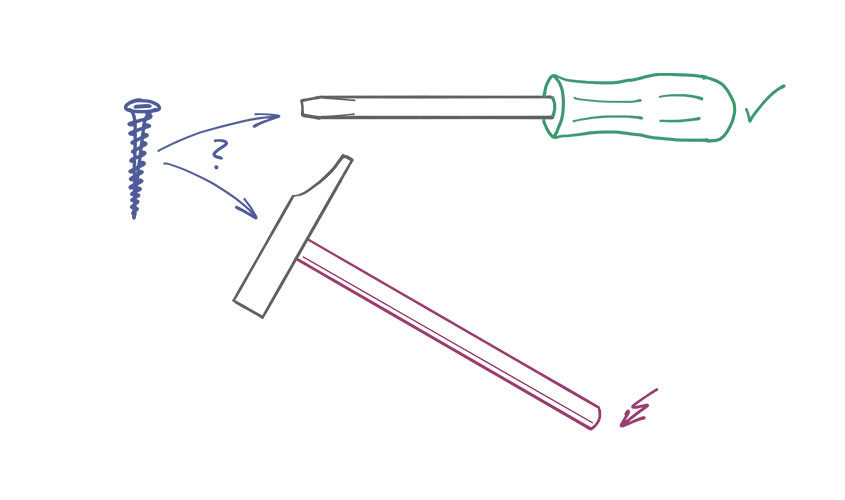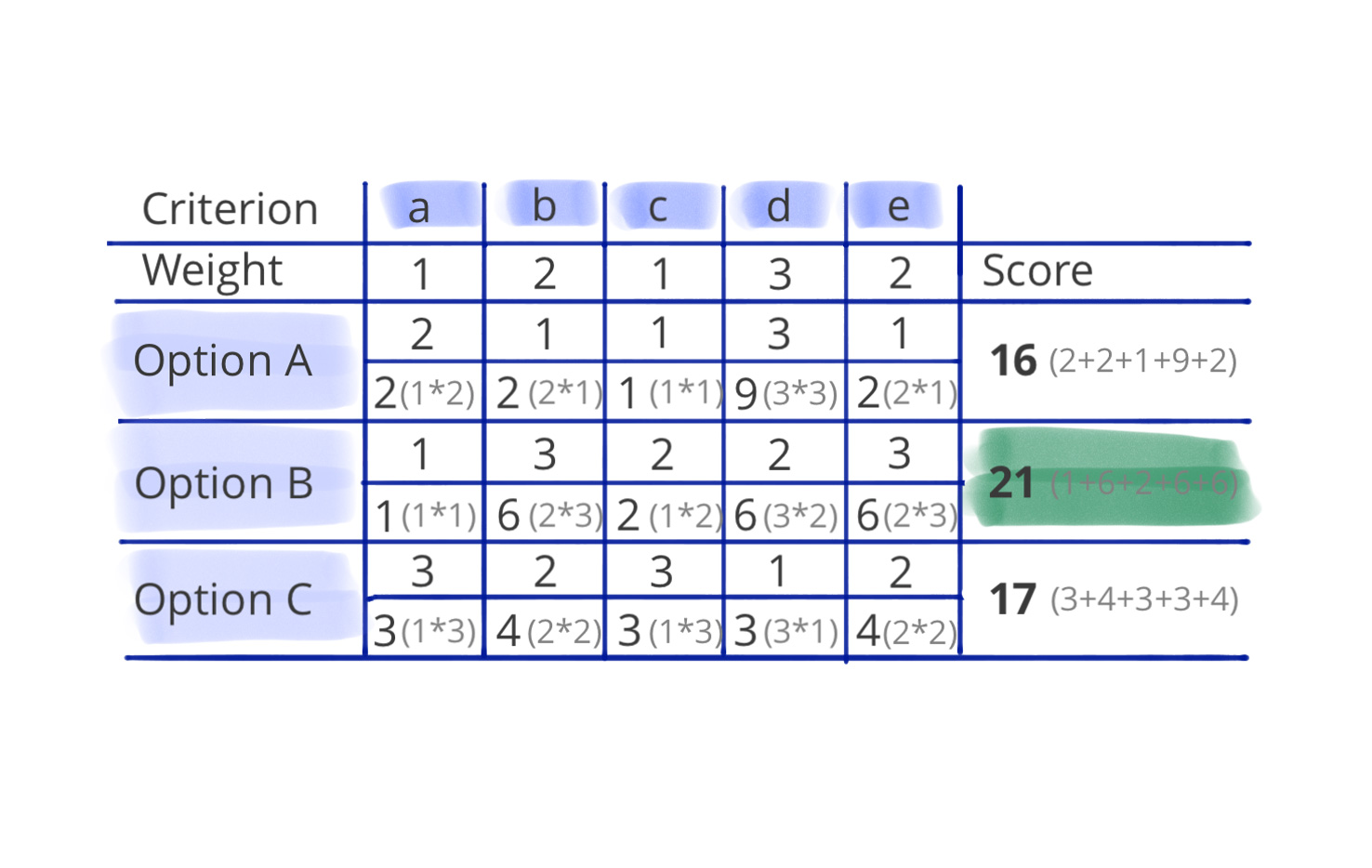Management tools are a dime a dozen. And yet, contrary to popular belief, most of them are good and helpful if used correctly and in an adequately defined context.
In “Tool Box Talks” we introduce you to common and less well-known tools and show you how you can exploit their potential for your enterprise, with today’s focus on a decision matrix.

What is the use of a decision matrix and when should it be applied?
Whenever you have to choose from several options of action while trying to achieve several targets at once, a decision matrix will help you to make an objective choice.
When it comes to innovation projects, you often can choose from a range of paths to pursue. Seldom is it clear which of these options will lead to the best result. This is where a decision matrix can be helpful by being explicit about how individual targets are assessed and by ranking all available options in a way that makes sense.

How is a decision matrix used?
When a decision matrix is used to reach a decision, three steps are necessary:
- Defining the assessment criteria
- Evaluating all options on the basis of these criteria
- Choosing the best option following this assessment
To define the relevant assessment criteria, you make a list of all targets or requirements to be met. Make sure that the respective criteria are as independent as possible. Sometimes you may have to combine several similar criteria into a single one. For instance, “acquisition costs” and “operating expenses” can be subsumed under “life-cyle costs”. Should some of the criteria differ in relevance, they can be weighted by different factors counteracting this imbalance.
The second step is to go through each available option by applying these criteria one after the other. Experience has shown that a single 3-step rating system is sufficient (1 = hardly true / 2 = true / 3 = going beyond expectations). If weighting is used, the assessment results have to be multiplied by the respective weighting factor. Then the individual evaluation figures for each option have to be totalled.
Last, the results are put to discussion within the resolutions committee deciding with which option is to be chosen and what is to happen with the remaining options.

Beware of pitfall!
When using the decision matrix, you need to pay double attention: First and foremost, make sure the chosen assessment criteria are independent of each other; for if there is a correlation between several criteria, it is one and the same topical area that is being assessed, thus falsifying the final result. If such interdependencies cannot be avoided, an intelligent weighting can be a valuable remedy by equal weighting of, let’s say, financial, technical and logistical aspects.
Equally important is the process of decision making. As is true for all management tools, the decision matrix delivers more or less unambiguous results. However, it should never automatically trigger a decision. Every result has to be discussed and, particularly so when there are only slight differences between the different options or when the results go against expectations, they have to undergo critical examination.

Why use a decision matrix?
As has been said before, a decision matrix makes it possible to evualate all available options by comparing them with each other, visualising them and making them measurable. In this way this tool allows decision makers to have an open discussion about the pros and cons of each individual option, showing very clearly how suitable each option is for reaching the set targets.
Nevertheless, the decision matrix does not by itself arrive at a decision for or against an option. This has to be brought about by the responsible staff members within a company. Likewise, even the option rated highest can be voted down – on the basis of a decision matrix providing the relevant arguments.

Follow us on LinkedIn to learn on a regular basis how you can make the most of management tools, so that you will stay one step ahead of your competitors.

